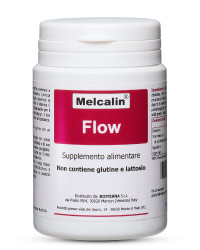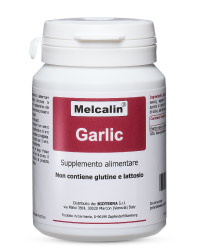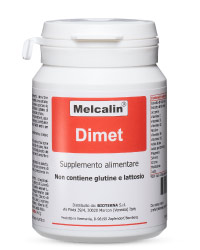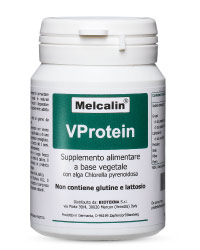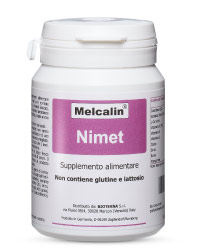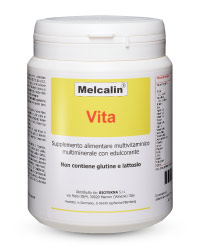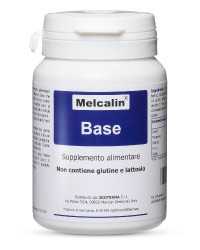Introduction
Lipids play an important role in nutrition and human health as they represent a concentrated source of energy, they are the main sources of essential fatty acids and contain fat-soluble substances such as vitamins and carotenoids.
They may be of either plant or animal origin.
Lipids of marine origin (fish oil) contain a wider range of fatty acids than the terrestrial counterpart (vegetable oils, butter), but there are certain fatty acids that deserve greater attention namely the fatty acids called PUFA (polyunsaturated fatty acids) of omega-3 and omega-6series; polyunsaturated fatty acids of the family of linolenic acid (omega-3 fatty acids) are typical of marine origin, while the PUFA belonging to the family of linoleic acid (omega-6) are found mainly in vegetable oils.
Both fatty acids omega-3 (ω-3) and omega-6 (ω-6) are important components of cell membranes and are the precursors to many other substances in the body such as those involved in the prevention and treatment of certain diseases namely heart disease, chronic inflammatory diseases, autoimmune diseases and of neurodegenerative nature.
The anti-inflammatory action of EPA + DHA (omega-3), coming from fish oil, can be enhanced by combining vegetable products such ashop extract (Humulus lupulus L.) (Melcalin LUPES).
Some components of the hops, in fact, have anti-inflammatory properties which proved by lower level of C-reactive protein (chronic inflammatory diseases and autoimmune diseases); its active ingredients act by inhibiting the activity on COX-1 and 2.
Omega-3 fatty acids
They come mainly from fatty fish such as mackerel, salmon, tuna and small fishes such as herrings.
This category includes two long-chain fatty acids: fatty eicosapentaenoic acid (EPA C20: 5) and docosahexaenoic acid (DHA C22: 5) both of which have shown to have significant beneficial effects on health.
These fatty acids are important in the development and function of the brain (CNS) and, in recent years, have attracted great interest because they have been proven effective in reducing the risk of heart diseases.
Researchers conducted over the past thirty years have reaffirmed the benefits of a diet rich of fish (omega-3 fatty acids), in fact, omega-3 long chain fatty acids play an important role in the prevention and treatment of coronary heart diseases, hypertension, diabetes, arthritis and other problems of inflammatory nature as well as other diseases of autoimmune nature, of some types of cancer and are essential for normal growth and development, especially for the brain and the retina.
EPA and DHA
Studies have compared EPA and DHA stating the best benefits of DHA:
Cancer: in experiments on animals DHA was more effective than EPA in inhibiting the factor of activation of the protein1 (AP-1) which is involved in tumor development.
Hypertension: high levels of DHA in the blood in patients with hypertension and diabetes, have led to an improvement blood pressure values9.
Inflammatory problems: DHA supplementation decreased the number of circulating neutrophils, concentrations of C-reactive protein (CRP) and interleukin-625.
Omega 6/Omega-3 Coomparison
Omega-6 are also essential fatty acids, are found mostly in vegetable oils, in complex carbohydrates and comfort food.
In the human body, linoleic acid (LA, belonging to the family of omega-6) and alpha-linolenic acid (ALA, belonging to the family of omega-3), introduced with the diet, are metabolized by the same enzyme, Δ6- desaturase, in:
– Linoleic acid into arachidonic acid (a precursor of eicosanoids involved in hypertension, platelet aggregation, thrombus formation and inflammatory response)
– The alpha-linolenic acid to EPA and DHA (substrates for the synthesis of eicosanoids with metabolic effects opposites: hypotensive, antiplatelet, antithrombotic and anti-inflammatory).
This has to be taken into consideration for health because an excessive intake of linoleic acid (omega-6) may reduce the amount of Δ6-desaturase available for the metabolism of alpha-linolenic acid (omega-3) with the consequent increase of the risk of heart diseases: data to support this theory show that in the last 150 years, the intake of omega-6 has increased, while the intake of omega-3 is decreased in parallel and there is an increase of heart diseases as a consequence.
It is reported that the presence, in the diet, of high concentrations of omega-6 can induce the generation of free radicals, predisposing the cardiac mitochondria to oxidative damage. A diet supplemented with sunflower oil, rich in omega-6, showed that a high-fat diet rich in omega-6 leads to mitochondrial damage and causes cardiac dysfunction10.
The solution is to limit the intake of omega-6 in the diet in such a way that the ratio omega-6 / omega-3 falls within certain values: in Western diets is present an excessive amount of omega-6 fatty acids compared to omega -3, and often the ratio is 15/1 (omega-6 / omega-3); such situation promotes the pathogenesis of many diseases, including cardiovascular diseases, cancer, inflammatory and autoimmune diseases while the increased levels of omega-3 (a low ratio omega-6 / omega-3) exert protective effects. In the prevention of cardiovascular disease, a 4/1 ratio (omega-6 / omega-3) is associated with a 70% decrease in mortality, a ratio of 2.5 / 1 (omega-6 / omega-3) is associated with a reduced cell proliferation in patients with colorectal cancer and a lower ratio omega-6 / omega-3 in women with breast cancer was associated with a reduced risk. A ratio of 2/1 (omega-6 / omega-3) is advantageous in suppressing inflammation in patients with rheumatoid arthritis, and a 5/1 ratio (omega-6 / omega-3) had a beneficial effect on patients with asthma, while a 10/1 ratio has had adverse consequences. Then a lower ratio of omega-6 / omega-3 fatty acids is ideal for reducing the risk of many chronic diseases of high prevalence in Western societies11,12.
A comparison with the omega-3 fatty acids stated that:
- Eicosanoids derived from omega-6 fatty acids are pro-inflammatory, while the eicosanoids derived from omega-3 fatty acids are anti-inflammatory.
- Whereas omega-3 have shown anti-cancer properties, omega-6 promote tumor development.
Comparison with linseed oil
Flax seeds contain from 30 to 40% of oil (which includes 50% of linolenic acid (omega-3) and 23-24% of linoleic acid (omega-6)), the 25% protein (increase acidosis) and other components in small amounts.
The presence of a high concentration of omega-3 can be misleading if you were to choose between the intake of fish oil and linseed oil: one gram of linseed contains twice as much omega-3 fatty acids compared to those contained in one gram of fish oil but we must emphasize the fact that alpha-linolenic acid found in the oil of linseed is transformed into EPA and DHA, with a rather slow and inefficient process, therefore, is less effective than oil fish because naturally low in EPA and DHA. It should be added to this first factor is also a non-negligible quantity of proteins which, as known, cause increase of acidosis which can lead to a sharpening of the inflammatory problems. Therefore, the fish oil, for the content in EPA and DHA (naturally present) and the absence of a protein source, represents the best solution.
Hops
The Hop (Humulus Lupulus) is a perennial herbaceous plant belonging to the family of Cannabaceae, used in medicine as a bitter tonic, sedative, hypnotic, and in the food industry for the production of beer20,21.
Recent studies enhance the anti-inflammatory properties of hops that are found in the lowering of C-reactive protein level and the anti-inflammatory properties of some of its components that act by inhibiting the cyclooxygenase-1 and 2 activities14,15, in addition some of hops flavonoids, in particular the xanthohumol, are able to selectively interact with the oestrogen receptors and exertan activity similar to the oestrogens’ activity on bone metabolism (thus reducing demineralisation), without producing the side effects of hormonal therapies (multiple publications reported there is an increased risk of breast and uterus cancer), pointing to a more protective effect on these issues; the active principles of hops are also useful to give relief in case of hot flashes and other menopausal disorders such as irritability16,17,18,19.
Other studies suggest that flavonoids from hops extracts have potential chemopreventive activity: these substances effectively inhibit proliferation of prostate cancer, breast cancer and ovarian cancer22,23,24.
Overall positive effects of the synergistic use of EPA + DHA and hops
EPA + DHA have an important role for the prevention and treatment of:
- heart diseases
- hypertension
- diabetes
- arthritis
- inflammatory problems
- autoimmune diseases
- some types of cancer
- and are essential for normal growth and development (especially for the brain and the retina).
Hops (Humulus Lupulus) demonstrated:
- Anti-inflammatory properties
- Activity similar to that the oestrogens’ activity on bone metabolism (reduction of demineralization)
- Positive effects on the symptoms linked to the menopause (hot flashes, irritability)
- Potential chemo preventive activity
Cardiovascular Diseases
The term “cardiovascular disease” refers to all the diseases that affect the heart and circulatory system, including ischemic heart disease, non-ischemic myocardial disease, hypertensive heart disease and valvular heart disease; they represent the leading cause of death in Western societies and their incidence has been linked to high fat intake, especially saturated fats, common in Western diets. Other risk factors for cardiovascular disease include a high intake of saturated and trans fats, diabetes mellitus, smoking, stress, lack of exercise, high sodium intake and genetic predisposition. It is becoming evident that the regular consumption of fish or fish oils containing omega-3 long-chain reduces the rate of incidence and mortality from cardiovascular disease.
The cardioprotective effects of fish oils were already assumed in 1950 according to intercultural studies on the Inuit of Greenland and Danish settlers of Greenland. These studies revealed that the Inuit of Greenland have a significantly lower incidence of heart disease than the Danish settlers, despite a comparable fat intake (40% of calorie intake) and a higher dietary cholesterol intake. This anomaly, that has been named “Eskimo Paradox,” has shown a strong correlation between low incidence of coronary heart disease and high consumption of fish (food rich in long-chain fatty acids).
The cardioprotective effects of omega-3 fatty acids are probably multifactorial and include an antiarrhythmic effect, antiatherogenic (reduction of development atheroma) and antithrombotic (for decreased platelet aggregation activity). The cardioprotective action can be mediated by a competition for the substrate between the omega-3 fatty acids and arachidonic acid (AA, C20: 4, n-6 fatty acid) for the cyclooxygenase (COX), which is the enzyme responsible for the production of prostaglandins and thromboxanes.
The Italian Group for the Study of Survival After Myocardial Infarction (GISSI) revealed that the intake of omega-3 fatty acids can lead to a progressive reduction in the risk of cardiovascular disease. In addition, the Lyon Diet Heart Study conducted in France was one of the first studies that placed the hypothesis and showed that a Mediterranean diet high in alpha-linolenic acid content is able to reduce the risk of cardiovascular events and death in subjects who have already had a heart attack1.
The omega-3, moreover, have shown to be useful also in decreasing the cholesterol values: the obtained data put in evidence that supplementation with omega-3 is able to prevent hypercholesterolemia (by adjusting the activity of the enzyme HMG CoA reductase), lower triglycerides (either alone or in combination statins) and to increase the total concentration of LDL2,3,4,5,6.
EPA+DHA (omega-3), chronic inflammation and autoimmune diseases
The family of autoimmune diseases is very wide, and disorders classified under this category are heterogeneous because of the severity of the disease and depending on the area subject to the organic damage. There are therefore in the autoimmune area skin disorders such as atopic dermatitis or psoriasis, forms of chronic pain such as rheumatoid arthritis, polymyalgia rheumatica, fibromyalgia, CFS (Chronic Fatigue Syndrome), diseases of the respiratory tract of allergic and inflammatory nature (allergic rhinitis, asthma forms), atherosclerosis, multiple sclerosis, allergic conjunctivitis. Autoimmune diseases are characterized by chronic systemic inflammatory nature (CIDs-chronic inflammatory diseases) associated with a neuroendocrine alteration that prevents the extinction of the inflammatory focus. In all the above pathologies, are proven, therefore, increases in the expression of proinflammatory cytokines such as IL-2, IL-6 and TNF-α and inflammatory markers (such as C-reactive protein).
Studies consistently reveal a deficit in immunoendocrino axis response in people with these diseases, with the consequent difficulty or impossibility to reduce inflammatory activity in progress. Autoimmune forms are therefore characterized, by inadequate neuroimmunoendocrina reaction to contain and possibly extinguish the phlogosis, with the consequence of reaching the damage of healthy tissues.
In order to limit the damage caused by chronic inflammation is essential to take into account the level of systemic inflammation (see BIA-ACC devices and TomEEx – BioTekna) and adopt strategies through supplementation with buffer systems (Melcalin BASE) (see “Non Volatile Acidosis, Volatile Systems Buffer) needed to counter acidosis typically associated with chronic systemic inflammation.
In order to have a synergistic action to increase the inflammation level, in addition to stimulating the immunoendocrino system, it is necessary the intake of omega-3 polyunsaturated fatty acids (Melcalin LUPES): EPA and DHA are particularly suitable for the suppression of inflammatory processes related to autoimmune diseases, mainly due to the inhibition of proinflammatory eicosanoids derived from arachidonic acid (omega-6). The lowering of the main inflammatory markers (in particular IL-6 and TNF-α) is in fact demonstrated by more parts following the integration of these omega-3.
Rheumatoid arthritis
Rheumatoid arthritis is an autoimmune disease characterized by chronic inflammation the causes of which are still unknown; It affects the synovial joints, namely the joints that join together the bones with movement (hand, elbow, knee), destroying bone and cartilage components. The symptoms commonly associated with rheumatoid arthritis affect joints and include swelling, warmth, pain on palpation and limitation of motion. It can occur at any age but usually affects people in their period of greatest productivity. The affected women are about twice as many.
The inflammation of the synovial membrane is mediated by cells of the immune response: mononuclear phagocytes, lymphocytes and leukocytes. Molecules such as prostaglandins, thromboxanes, and leukotrienes and derivatives of arachidonic acid (omega-6 fatty acid) stimulate the formation and activity of adhesion molecules, cytokines and chemokines. The pro-inflammatory cytokines are implicated in arthritis TNF-alpha, IL-1beta and IL-6.
The omega-3 fats can affect the functional activity of immune cells, as they are able to alter the production of mediators involved in communication between cells of the immune system (eicosanoids, cytokines, NO) and thus relieve the symptoms of this pathology: it has been shown that the administration of fish oil for four weeks in healthy men has reduced by 20% the production of IL-1beta (interleukin an affected in rheumatoid arthritis) demonstrating that the omega-3 fatty influence the production of cytokines by leukocytes.
Pulmonary Inflammations
The frequency of inflammatory problems in the lungs is growing in Western countries. Some have speculated that this trend is due to the high intake of omega-6 (vegetable oils and comfort food) compared to omega-3 (characteristic of Western diets); this may cause an increased production of proinflammatory cytokines and, consequently, bronchial inflammation in susceptible individuals. A study has revealed that children who have not eaten fish in the first years of life have a three times greater risk of developing asthma than children who ate it. The fatty acids of fish, EPA and DHA, tend to reduce the incorporation of arachidonic acid in membrane phospholipids and are able to decrease the production of the proinflammatory arachidonic acid from the eicosanoids. Therefore, the fish oil can have therapeutic effects on pulmonary inflammatory diseases.
Bowel Inflammation
Inflammatory bowel disease (IBD) is a general term for chronic inflammatory diseases of the gastrointestinal tract. The incidence of these diseases is higher in Western countries compared to Asian countries; epidemiological evaluations attribute this trend to the high intake of saturated fatty acids and omega-6 found in the Western diets series. Several studies have shown an inverse relationship between consumption of omega-3 acids and chances of suffering from these diseases.
Also with regard to celiac disease it is seen that the assumption of long-chain fatty acids DHA is able to inhibit the release of arachidonic acid from intestinal epithelial cells when these are in contact with the gliadin; therefore, you will have a reduction of intestinal inflammation7.
Cancer
The term cancer is used with reference to a number of diseases that are characterized by unusual and uncontrolled cell growth (neoplasia). Several studies have shown that the composition of fats in the diet influences the progression of certain types of cancer.
Epidemiological studies indicate that omega-3 can prevent prostate cancer and also their long-term use can slow tumor progression to metastasis. The antitumor effect was also demonstrated for colon cancer: western populations show a higher incidence and a higher death rate from colon cancer compared to Asian populations; there is an inverse relationship between mortality from cancer and intake of fish or fish oil (omega-3). Studies have revealed that high levels of Omega-6 promote tumor development, while omega-3 fats reduces or protects against tumor progression.
Mental Health and Neuronal Functions
Excluding the adipose tissue, the nervous system has the highest lipid content than the other tissues; among these lipids an important part is represented by omega-3 in a particular way by DHA. DHA is especially important during prenatal development: its incorporation in growing neurons is a prerequisite for the formation of synapses. The importance of omega-3 during prenatal development is high given that a deficiency in this nutrient increases the likelihood of having vision problems, cognitive and neurological problems.
The effects of EPA + DHA fatty acids on depression symptoms are very interesting. America is one of the countries with the largest number of psychiatric disorders, in fact 1 in 20 people suffer from this type of disorders. Several pathophysiological figures, including an overproduction of inflammatory cytokines, are involved in the development of this disease. The positive effects of EPA + DHA in depression seem to be linked to a modulation in the production of eicosanoids. The eicosanoids produced from omega-3 do not activate the magrofagi, therefore, the replacement on the cell membrane of omega-6 fatty acids with omega-3 fatty acids would reduce the production of proinflammatory cytokines. The omega-3 seem therefore useful as a possible addition to drug therapy.
Neurodegenerative Diseases
Alzheimer’s is a progressive degenerative disease, characterized by loss of memory and a global cognitive loss. It has long been hypothesized that the disease was linked to a deficiency in the brain lipids. Recently, epidemiological studies have suggested that an intake of high levels of omega-3 is inversely associated with cognitive decline, development of dementia and Alzheimer 8.
Recovery of the integrity of cell membranes
EPA and DHA perform structural and functional bio-regulators functions in the human body. They are embedded in the cell membrane, contributing to the formation of the lipid bilayer.
Their deficiency (Le-Lipids essential-BIA-ACC device), therefore, it has effects on the membrane structure resulting in increased risk of onset of diseases: PA – HPA axis index (Phase Angle or phase angle – HPA axis, BIA device -ACC BioTekna) is an important marker integrity of cell membranes.
Conclusions
Diet, nowadays, prefers the intake of foods rich in omega-6 and low in products rich in omega-3 (EPA + DHA) as fish, resulting in a dietary imbalance in favor of omega fatty acids 6 and imbalance of the ratio omega-6 / omega-3 that may predispose to a number of diseases including cancer and inflammatory and autoimmune disorders.
The correction of this imbalance between omega-6 and omega-3 in diets can be reached with the fish oil supplementation in capsules (high titration of EPA + DHA) and with a diet low in omega-6 fatty acids and high in omega-3.
The intake ofEPA + DHA and Hops, as seen, has significant positive health effects against various issues; in Melcalin LUPES both are present, EPA + DHA and hops, in order to have an adjuvant action of the two products.
Melcalin LUPES contains fish oil with a high amount of omega-3 (higher than 80%)that are given to reduce inflammation related to autoimmune disorders (by inhibition of the synthesis of proinflammatory eicosanoids) and also for cardiovascular and neurological diseases.
Melcalin LUPES also contains acids EPA / DHA with ratio of 1: 3: the ratio in favor of DHA over EPA is useful precisely because of the major health benefits that this compound has been shown to have; the presence of hop supports the anti-inflammatory action of EPA + DHA: its anti-inflammatory properties are found in the lowering of C-reactive protein level. Some of the hops flavonoids are also effective to treat the disorders that can occur in menopause such as hot flashes, irritability and bone demineralization.
Melcalin LUPES therefore, it is an ideal supplement for restoring a proper ratio omega-6/3 in the body that becomes unbalanced due to bad eating habits; the benefits of a high intake of omega-3 are added to those resulting from a high concentration of DHA and those of the presence of Hops.



